Not only the physical health, but also the psychological state of a person depends on the condition of the skin and its appearance. Pigment spots, especially on open areas of the body, can cause a lot of inconvenience to a person, no matter what age he is. But you shouldn’t consider a pigmentation disorder as just an annoying aesthetic problem - in some cases, a pigment spot may be a signal that it’s time to go to the hospital and undergo a full examination. In order to preserve youth and health of the skin for a long time, you need to know why the production of pigments is disrupted and how to permanently get rid of age spots on the face.
What is a pigment spot?


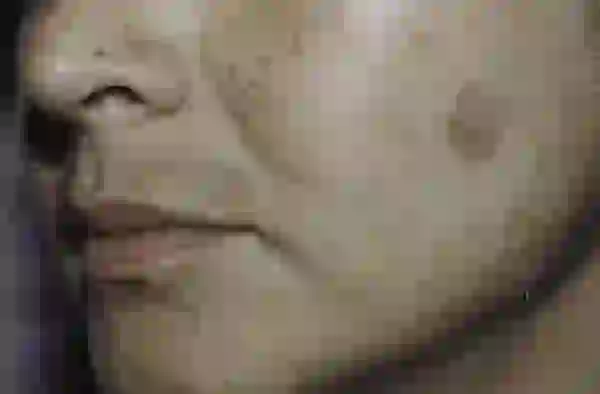
In a healthy person, special cells - melanocytes - constantly synthesize the pigment - melanin. This substance determines the color of hair, skin and eyes. Also, normally, the production of melanin is enhanced by ultraviolet radiation - a bronze tan appears on the skin. But sometimes, under the influence of environmental factors, as well as pathological processes that occur inside the body, the normal production of melanin is disrupted, which leads to the appearance of age spots on the face.
A pigment spot is a limited area of skin in which hyperpigmentation or hypopigmentation is observed. Hyperpigmentation is caused by excessive synthesis of melanin, hypopigmentation is caused by a decrease in the intensity of this process. Pigmentation disorders can manifest themselves in various diseases of internal organs, and can also be a consequence of already suffered dermatological diseases.
Why do age spots appear on the face?
The face is that part of the body that is constantly under the influence of negative factors. This is why pigmentation disorders most often develop on the face. Experts identify a number of reasons why age spots develop on the face. These include:
- exposure to ultraviolet rays. As already mentioned, under the influence of ultraviolet radiation, the skin becomes darker, as melanin synthesis increases. However, with prolonged exposure to direct sunlight, as well as with frequent visits to the solarium, pigment spots appear on the skin - this is a protective reaction of the body.
- genetic predisposition to hyperpigmentation. Heredity also plays a very important role. Doctors note that in children whose parents suffer from age spots, the risk of their occurrence increases several times.
- hormonal imbalances and chronic diseases of internal organs. Often pigment spots on the face are a signal that one or another pathological process is occurring in the body (this could be diseases of the stomach, liver, intestines or gall bladder). Also, pigmentation on the face often appears during endocrine diseases and when hormonal levels change: during pregnancy and lactation, during puberty, during menopause.
- improper skin care. If skin care products and decorative cosmetics are chosen incorrectly, this can lead to the appearance of age spots on the face.
- environmental factors. Changes in temperature and humidity, excessive friction and squeezing of the skin can also disrupt metabolic processes in the layers of the epidermis - as a result, melanocytes begin to actively synthesize pigment.
- stress and emotional overload. The state of the nervous system can also indirectly (through its effect on hormones) affect the condition of the skin. With chronic stress and fatigue, the protective functions of the skin decrease and it becomes more susceptible to physical and mechanical stress.
- insufficient intake of vitamins and minerals. Minerals and vitamins, like hormones, can influence the quality and speed of reactions that occur in the body. Therefore, if they are deficient, there is a high probability of developing areas of hyperpigmentation on the face.

Pigment spots after acne
Young girls especially often face this problem. If acne, furunculosis, and other dermatological diseases are not treated correctly, there is a risk of developing pigment spots on the face. The more damaged the skin is, the more likely it is that areas of hyperpigmentation, or white spots, will appear on the face.
Pigmentation in dry skin
Dry skin is thinner and more sensitive to various environmental factors. Therefore, pigmentation occurs more often in those people who have dry, fair skin.
Localization and features of age spots on the face
Excessive pigmentation can appear on any part of the face. Most often, age spots can be seen on the nose, cheeks, eyelids, around the mouth and on the chin, sometimes the forehead and even the ears are affected. They can be located either singly (nevi) or in the form of clusters (which is typical for chloasma, solar lentigo and freckles). If excessive pigmentation occurs as a result of perioral dermatitis, then pigment spots will be located around the lips. After suffering periorbital dermatitis, you can notice pigmentation around the eyes, on the forehead, bridge of the nose and cheekbones. The color can also vary from dark beige to red, dark brown and even black (for example, when nevi occur).
What types of age spots most often appear on the face?
As already mentioned, the face is the part of the body that is more susceptible to the appearance of age spots than others. Pigmentation disorders are typical for the following conditions: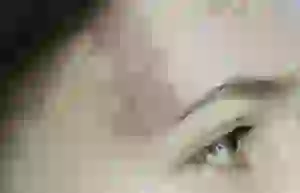
- freckles or ephelides. These are small spots whose color can vary from dark beige to orange or brown. They usually occur on the cheeks, but can spread to other parts of the face, as well as the arms and shoulders. People with fair skin are prone to the appearance of freckles. In most cases, ephelides appear in the spring (under the influence of ultraviolet radiation), and by autumn they go away on their own. But sometimes there are cases when freckles can be noticed on the skin in any season.
- lentigo. There are 3 types of this disease: juvenile (or juvenile) lentigo, senile lentigo and solar lentigo. Juvenile and senile lentigo is associated with changes that occur in the body - these are hormone fluctuations and changes in skin type. Solar lentigo is directly dependent on ultraviolet radiation. Pigment spots in these conditions are located in groups, their color may differ.
- chloasma. These are pigment spots that appear as a result of endocrine system disorders, and often during normal changes in hormone levels (during pregnancy or menopause, after stopping oral contraceptives).
- nevi (birthmarks, moles). Often these pigment spots appear in the prenatal period of development, as well as in the first years of life. They can be of different sizes and colors, localization also differs in each specific case. In most cases, they are convex and rise above the surface of the skin.
- vitiligo. This is a disease in which white spots appear on the skin. Vitiligo often appears on the skin of the extremities, but sometimes this process can also be seen on the face. Scientists have not fully studied the mechanism of occurrence of this disease, but most of them are inclined to believe that melanocytes in vitiligo are destroyed under the influence of antibodies that are “erroneously” produced by the immune system.

Sometimes pigmentation disorders can also occur after other dermatological diseases, and can also be a sign of fungal skin infection (for example, with pityriasis versicolor).
What symptoms may be a reason to seek medical help?
In most cases, patients with age spots on the face are not bothered by physical discomfort. The only complaint may be the presence of an area of hyperpigmentation or hypopigmentation, which primarily causes psychological discomfort. Approximately 95% of age spots are absolutely safe for health and do not pose any threat to the body.
If there is a pigment spot (or several) on your face, you need to remain calm and simply observe their development over time. Doctors recommend conducting a visual examination of the skin of the face; this should be done once every 2-4 weeks. In this case, each time it is necessary to record all the data about the area where excess pigmentation is observed. It is necessary to record what size and color the spot is, what edges it has, whether it is symmetrical, and how it develops. One of the following 5 signs may be a reason to urgently consult a doctor:
- the birthmark is more than 6-7 mm in diameter;
- the color is uneven or has changed;
- edges are fuzzy, uneven;
- asymmetry of the neoplasm;
- the pigment spot increases rapidly.

It is very important to consult a doctor if one of the above signs appears, because it may indicate the initial stage of melanoma (skin cancer).
What studies and tests are needed for diagnosis?
Pigment spots are often a sign of a skin disease, so it should be diagnosed and treated by a dermatologist. But sometimes consultations with other specialists are also required: gynecologist, endocrinologist, gastroenterologist, neurologist, therapist. This is necessary in order to make sure that there are no other pathologies on the part of the internal organs. Diagnostics takes place in several stages:
- Initial appointment with a dermatologist. During it, the doctor communicates with the patient, finds out his complaints, collects an anamnesis of life and illness, as well as family and allergy history. During a conversation with the patient, the doctor will find out how long ago the age spot appeared, how it developed, what could have triggered its occurrence (according to the patient), and whether there have been similar cases in the family. After this, the doctor conducts an examination: assesses the number of pigment spots, their color, size, and location.
- Making a preliminary diagnosis. It is carried out on the basis of data obtained during questioning and inspection. The preliminary diagnosis determines what examinations the patient needs to undergo.
- Additional studies (instrumental and laboratory): dermatoscopy, general blood test, biochemical blood test, general urine test, biopsy, bacteriological examination of skin smears.
- Making a final diagnosis. It is carried out on the basis of all the information received. Depending on the final diagnosis, the patient is recommended the necessary therapy that will help cure age spots.

Treatment methods for age spots on the face: drug and hardware therapy, cosmetics, folk remedies
Removing age spots is a fairly lengthy process that requires some effort. The main principle of getting rid of age spots is to identify and eliminate the cause that led to this condition. In order to remove existing age spots, the following bleaching agents are used:
- A 3% solution of hydrogen peroxide, which should be applied only to the area where pigmentation is observed. Hydrogen peroxide can irritate the skin and dry it out, so be sure to consult a doctor.
- preparations containing mercury. They are effective in whitening skin, but are sold by prescription only and should be used under the supervision of a specialist.
- ointments, pastes and creams with zinc. This is one of the safest ways to remove age spots on your face. Use with caution for people who have dry and flaky skin - zinc can aggravate this condition.

Therapeutic cosmetics with a brightening effect: what to look for when purchasing
Whitening creams and masks are very popular. To date, hundreds of such products have been developed, but they contain one of the following substances:
- topical retinoids;
- kojic acid;
- hydroquinone;
- licorice root extract;
- mequinol;
- niacinamide;
- azelaic acid.
The advantage of medicinal cosmetics is that it normalizes melanin synthesis, thereby reducing the likelihood of developing new age spots.
It must be remembered that medicinal cosmetics should be selected together with a dermatologist and cosmetologist. It is also necessary to carefully read the instructions for use and study the composition. Under no circumstances should you buy imported cosmetics whose instructions have not been translated into Russian - they may contain harmful chemical compounds and even topical steroids. It is important to always check quality certificates and order medicinal cosmetics on official websites or buy in pharmacies.
Traditional methods of treatment
Alternative medicine is good because it is accessible, inexpensive, has a small number of contraindications and side effects, and helps with treatment in childhood and adolescence. The most effective folk remedies for age spots are masks and lotions using the following ingredients:

There are a large number of recipes online using these products, but you should always remember that traditional medicine has not been tested by dermatologists, so it may cause some side effects. Before using any method of alternative medicine, it is mandatory to consult your doctor and conduct an allergy test. To do this, you need to apply a small amount of the resulting product to the skin and observe its condition for 20-30 minutes. The most effective recipes in this article.
Basic methods of hardware therapy that will help remove age spots
For several decades now, hardware medicine has been a leader in terms of effectiveness in the fight against excessive pigmentation. Currently, the following methods of hardware cosmetology are used:
- removal of pigment spots with laser;
- cryotherapy (exposure to liquid nitrogen);
- chemical peeling;
- phototherapy;
- mechanical cleaning.
These procedures are aimed at exfoliating dead cells, starting and accelerating regeneration processes. By removing the upper layers of the epidermis, age spots are also removed. The disadvantage of these treatment methods is that they only help remove pigment spots on the face that exist, but do not in any way affect the impaired synthesis of melanin - the cause of hyperpigmentation. Methods of hardware treatment of age spots should also be agreed with a doctor, because many of them have a number of contraindications.
Prognosis and possible complications
Since 95% of age spots are safe, the prognosis is favorable. However, you need to remember the risk of complications. Sometimes the cells in a birthmark become malignant, leading to the development of skin cancer (melanoma). Melanoma is one of the most dangerous types of cancer; it develops quickly, is difficult to treat and metastasizes even to the most distant organs.
In order to avoid this complication, you need to undergo regular examinations with a doctor or independently monitor the condition of birthmarks. At the first sign of an enlargement or other change in the birthmark, you should urgently seek medical help!

How to avoid the appearance of age spots on the face?
The skin of the face is very thin and vulnerable, so you need to take enough measures to protect it from the effects of negative environmental factors. To avoid the appearance of pigmentation disorders on the face, doctors recommend:
- limit the time spent under the influence of ultraviolet rays (beach, solarium). Under no circumstances should you sunbathe during periods of increased solar activity: 11-15 hours of the day. People with fair skin should follow this recommendation especially carefully.
- Be sure to use sunscreen. It is better to choose natural, hypoallergenic creams with an SPF filter of more than 40.
- decorative cosmetics and care products should be chosen only of high quality. You can also use cosmetics that are designed for skin prone to hyperpigmentation (for example, there are foundations and makeup bases that also protect against UV rays).
- monitor your health: regularly undergo preventive examinations with a therapist;
- avoid stress and unnecessary stress on the body;
- use all medications (tablets, injections, ointments) only under the supervision of a doctor;
- if other skin diseases occur, do not self-medicate - this can aggravate the condition and lead to the appearance of hyperpigmentation;
- protect skin from exposure to heat, cold and wind;
- eat a balanced diet, eat more vegetables and fruits in season.
Pigment spots can cause psychological discomfort, so they can and should be dealt with. Thanks to modern technologies, you can permanently clear your face of age spots in just a few months.
The condition of the skin is one of the priority issues for a woman, so if dark age spots begin to appear on the face, the causes and treatment are sought with special diligence. Is such a visual defect dangerous, why is it observed in children? Is it possible to treat a face with hyperpigmentation on your own and what methods of removing spots does modern cosmetology offer?
What are pigment spots
Each person's skin cells contain a certain amount of melanin pigment, which is responsible for its shade - the more it is, the darker the skin will be. In albinos it is completely absent, in others it is observed to a lesser or greater extent. If a person is healthy, the distribution of melanin will be even, which will give the skin an even, beautiful shade. If there are any disturbances inside that affect the production of melanin, focal accumulations of it appear, which are called pigment spots.
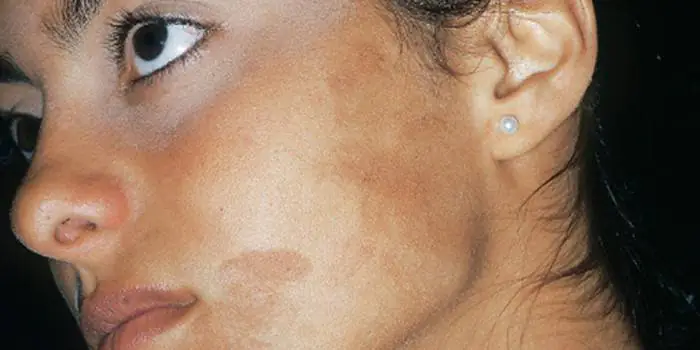
Symptoms
Pigment spots do not cause a general deterioration in well-being - apart from the appearance of a cosmetic defect, women and men do not notice any changes in themselves, unless diseases of the internal organs are among the causes of hyperpigmentation. If spots form in the upper layer of the skin (epidermis), they can be light in color and small in size. Mostly freckles.
Hyperpigmentation in deep layers may have the following characteristic features:
- a dark shade of brown and even black;
- changes in relief.
Separately, doctors mention cases of pigment spots due to a chemical burn - in such a situation a person will:
- complain of itching;
- experience discomfort when touching the stain;
- see a large area of the lesion (mainly the area of the nose, forehead).
Causes
The key prerequisite for the formation of such skin defects is genetic predisposition - in rare cases, it causes facial hyperpigmentation even in infants, although it mainly makes itself felt later, as the hormonal background develops. However, spots can also indicate skin diseases or internal disorders, even dangerous pathologies. A few of the most obvious options for what causes age spots on the face:
- Due to prolonged exposure to ultraviolet radiation.
- In case of hormonal imbalances, especially those associated with pregnancy, pigment spots can form not only on the face - they often affect the entire body, but doctors do not recommend treatment in such a situation: after childbirth, the body will return to normal.
- If the spots that appear are yellow in color, the area of hyperpigmentation is extensive and is localized mainly in the lower half of the face, the reason for their formation may lie in liver diseases.
- Due to kidney pathologies and malfunctions of the endocrine system, large flaky spots are formed.
Separately, doctors remind that the face and body can become covered with age spots:
- with long-term use of hormonal drugs (especially incorrectly selected ones);
- after the work of an unqualified cosmetologist (often with chemical peeling);
- due to burns from chemicals;
- after laser peels to eliminate acne;
- after using phototoxic drugs (antihistamines, tetracyclines, sulfonamides) simultaneously with sun exposure.

Dark spots on the face in the elderly
As a person ages, the process of melanin production changes, as does the amount of this pigment in melanocytes, so all older people are susceptible to the appearance of age spots (especially on the face). However, a special risk group consists of those who are actively exposed to sunlight, which provokes increased melanin synthesis. In addition to this reason for the appearance of brown (mostly) spots in the elderly, doctors identify several more:
- Deficiency of vitamins and microelements, especially pronounced as the body ages, can increase the severity of pigment formations.
- In women, hormonal imbalances caused by menopause are a common cause of hyperpigmentation, which primarily appears on the hands and then spreads to the face.
- The causes of pigmentation on the face include malfunctions of the intestines and kidneys, but the spots in such a situation are large, not always brown - they may have a yellowish tint.
Types of pigmentation
Doctors identify 5 main types of hyperpigmentation based on their appearance and the reasons why they appear:
- Freckles. A natural reaction of fair skin that occurs after prolonged exposure to UV rays.
- Lentigo. Age spots.
- Chloasma. These are hormonal dark pigment spots on the face - the causes and treatment depend on the degree of changes in the ratio of hormones: in pregnant women everything normalizes on its own, in case of endocrinological diseases it is necessary to resort to complex treatment.
- Vitiligo. They are also associated with a malfunction in the endocrine system, but tend to increase over time, have a dark color and a large affected area.
- Moles. They are congenital in nature; treatment or removal of pigmented formations of this type requires serious indications: precancerous condition, etc.
How to get rid of age spots on the face
A treatment regimen cannot be drawn up without understanding the cause of hyperpigmentation: if pregnancy or contraceptive use is to blame, after stopping them (or after childbirth) the problem disappears on its own. Age-related pigmentation also cannot be eliminated - you can lighten its foci (using home skin whitening methods or in a salon), but not get rid of it completely.
If the hyperpigmentation is not freckles or lentigo, and we are not talking about birthmarks, the person needs to be examined by a neurologist, gastroenterologist, dermatologist, and complex therapy is used for treatment:
- A course of laser therapy to reduce spots.
- Skin whitening procedures (at home and in the salon).
- Treatment of diseases that cause hyperpigmentation.
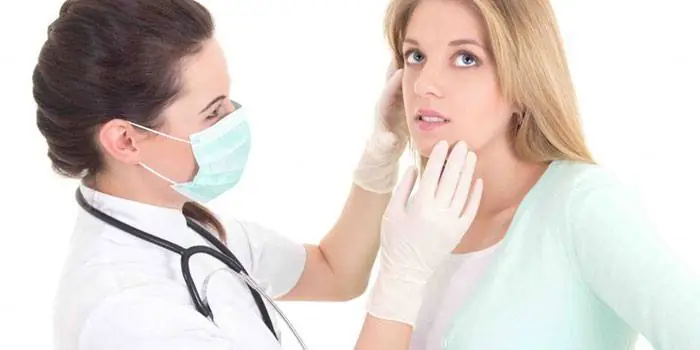
Cosmetic preparations
You need to decide how to deal with age spots on the face using potent cosmetics together with your doctor: along with effective treatment, you can get a lot of side effects. This is especially true for pregnant women. Mostly doctors use drugs based on:
Special creams
If you have undertaken intensive treatment of a cosmetic defect, doctors may advise you to whiten pigmented areas on your face using the following means:
- Retin-A - cream effectively eliminates any age spots on the face - the reasons for their appearance and the treatment prescribed by a specialist do not affect its effectiveness. The course is 30 days, the drug acts by reducing the amount of melanin.
- VC-IP works with ascorbic acid, is one of the anti-aging agents, and helps well with lentigo, after chemical and laser peels. The course is from a week to a month.
Cosmetic procedures
Among the treatment methods that cosmetologists can offer, the most significant results are provided by phototherapy, laser and chemical peeling: before-after photos clearly show the difference after several procedures. Features of these techniques:
- Chemical superficial peeling helps to treat age spots on the face by launching regenerative processes in the skin, so the effect will be long-lasting. Complete elimination of the pathology is possible.
- Phototherapy is the effect of infrared rays on pigmentation, but for dark skin this is not the best treatment method, since all melanocytes are affected.
Laser peeling
If a woman is tired of looking for ways to remove pigmentation from a large area on her face, a cosmetologist can offer laser peeling. It is effective against superficial pigment formations and can help in removing freckles, but is useless if the skin is prone to chloasma due to hormones. There are 3 disadvantages of the procedure:
- After exposure to a laser beam, your face should not be exposed to the sun for 14-20 days, otherwise new spots may begin to appear, so it is better to carry out treatment in winter.
- The traumatic nature of laser peeling makes it inaccessible to people with sensitive skin and blood clotting problems. If there are moles, peeling is also not done.
- High price, because a complex of 5-10 frequent procedures is needed.
Treatment at home
Traditional medicine gives a weak effect when compared with laser removal of pigmentation or other salon techniques, or with treatment using pharmaceutical drugs. However, as one of the stages of fighting stains, you can use:
- washing with herbal decoctions (the face is wiped with infusion of chamomile and birch buds);
- using hydrogen peroxide (3%) to wipe the face;
- whitening masks.
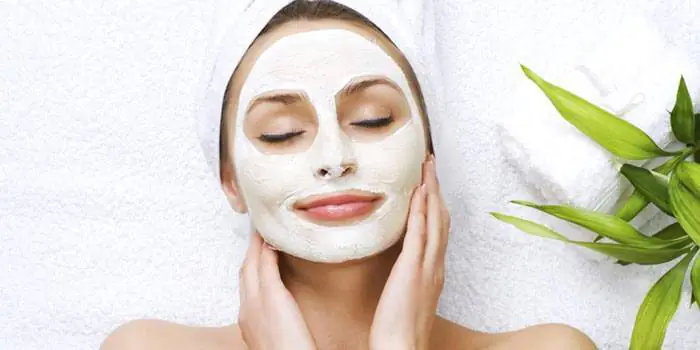
Effective masks
The visual side of the issue can be partially resolved even at home, using the following recipes for masks against facial hyperpigmentation:
- For spots caused by prolonged exposure to the sun, a mixture of white clay and chamomile decoction (to a paste), which is washed off after half an hour, works well. Course – 2 weeks.
- To treat lentigo, you can try a homemade mask made from grated fresh cucumber pulp, which you need to sit with for 15 minutes. The duration of the course is until positive results appear.
Milk-yeast mask
In a situation where spots are formed under the influence of UV rays, or are associated with frequent rashes on the face (reddish areas appear after their removal), you can try one of the effective masks based on fresh milk and live yeast. They are mixed so that a paste is obtained, so the proportion is taken by eye. Apply the warm mixture to the face, leave for half an hour and carefully rinse off. Course – 2 weeks.
Lemon
If you are concerned about freckles, which tend to appear as soon as the sun begins to warm up, use fresh lemon juice daily: they need to be wiped over those areas of the face where pigmentation forms. If the skin is dry, mix the juice with live (!) yeast using a 3:1 ratio. Apply the mixture thinly to the face, hold for 10 minutes and rinse, then lubricate the treated areas with cream. The procedures are recommended to be carried out every evening for 3 weeks.
Parsley juice
Fresh chopped parsley also shows good results: the prepared pulp is combined with fresh milk (only 2 tbsp for a large bunch of greens). Apply the mask onto your face in a thick layer and wash off after half an hour. The duration of the course of “treatment” is not limited - you can carry out the procedures until noticeable results appear, or 3-4 weeks and take a break.
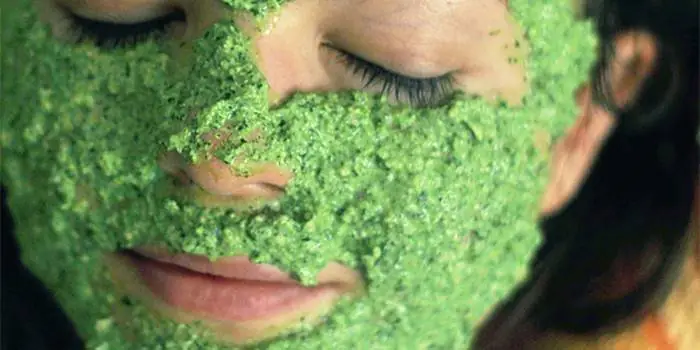
Prevention of occurrence
You can only protect yourself from hyperpigmentation associated with vitamin deficiency, the functioning of internal organs, or exposure to sunlight:
- do not get carried away with tanning (especially from a solarium) and do not go outside in the summer and spring without SPF products;
- take multivitamin complexes;
- monitor the condition of your liver.
Every woman wants to have healthy and beautiful skin, but often not everyone succeeds. Various obstacles prevent this from being achieved, for example, brown spots that are annoying with their unattractive appearance. Every person who faces this problem begins to wonder how to remove pigmentation on the face. Most often, this cosmetic effect appears over the age of 35 years. Getting rid of brown spots on the face can be challenging for women.
Appearance of pigmentation
Brown spots on the face occur in both young and older people. Most often they form between 40 and 50 years. These are the so-called brown age spots on the face. It is extremely rare that pigmentation can disappear spontaneously without any treatment. As a rule, stains tend to grow, and in order to get rid of them, you need to make a lot of effort.
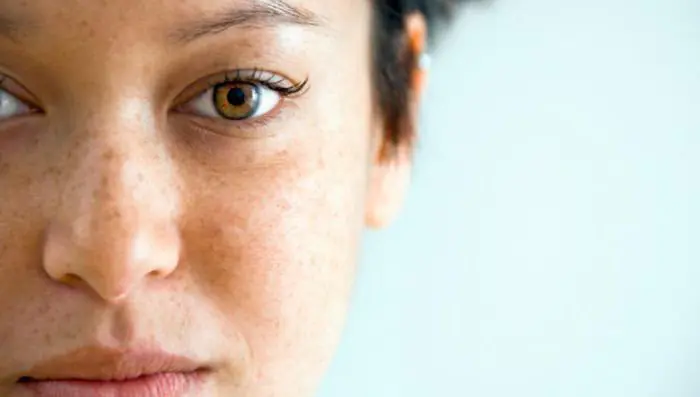
Choice of treatment method
Many people ask the following question: “Brown spots appear on the face, what should I do?” Pigmentation on the face is not only a cosmetic problem. The condition of the skin depends more on the functioning of internal systems and organs, so the fight against various cosmetic problems only through masks and creams is meaningless. These methods are important only in conjunction with complex treatment. Before choosing a treatment method, it is necessary to examine the entire body and identify the causes of the formation of brown spots.
Sometimes special cosmetics for external use can give some results - the spots can decrease in size and turn pale. However, this, as a rule, is not enough, since even a very expensive cream cannot eliminate the cause of this defect on the facial skin. After some time they return again, and very often become more noticeable.
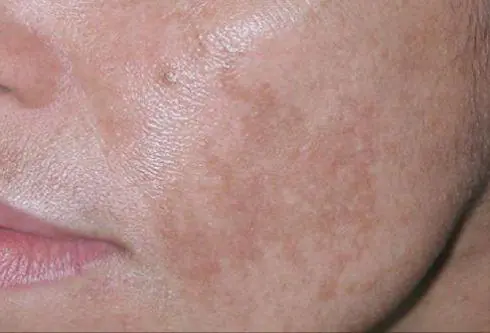
The essence of the problem
Pigment spots are characterized by a high concentration of melanin in certain areas of the skin. You may notice the formation of moles or freckles if this substance is deposited in the upper layer of the epidermis. They usually do not cause any problems or discomfort.
Hyperpigmentation is caused by the accumulation of melanin in deeper layers, resulting in the formation of dark brown spots on the skin surface, which can sometimes even appear slightly prominent.
Experts distinguish the following types of pigmentation:
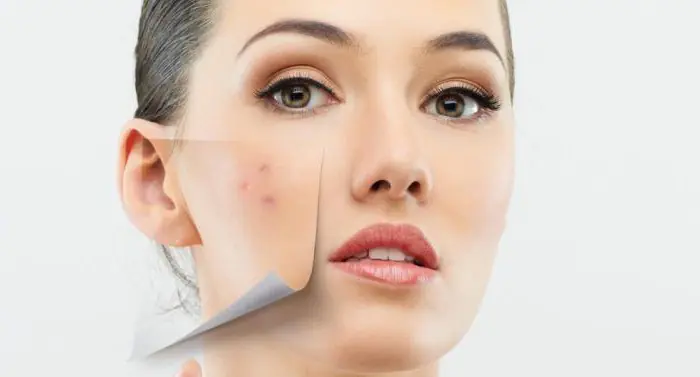
Brown spots on the face: causes
Melanin, which is located in different layers of the epidermis, begins to be more actively produced and accumulates in specific areas of the skin, while it forms pigmentation on them.
Causes of brown spots on the face may include the following:
- Hormonal imbalance in the body, which is usually caused by pregnancy, thyroid disease, menstruation or childbirth. There is no point in fighting brown spots until the cause of their occurrence is eliminated. They lighten up and go away after the hormonal levels in the body are completely stabilized.
- Heredity. In this case, brown spots can only be removed by resorting to laser resurfacing.
- Stress, nervous disorders, depression, which can also be accompanied by changes in hormonal levels, which causes pigmentation on the face.
- Trauma to the skin. After chemical and thermal burns, as well as unsuccessful cosmetic procedures, such as peeling, pigmentation may occur. In addition, brown spots can be the result of furunculosis or severe acne. In this case, complex treatment should be carried out.
- Avitaminosis. Sometimes moles or freckles appear from a lack of certain vitamins and microelements. It is necessary to take a course of taking the missing vitamins; they must contain copper and vitamin C, and then the spots will quickly disappear.
- Taking medical medications. After using medications such as hormonal and contraceptive drugs for a long time, age spots may appear on the face. You should immediately inform your doctor about this phenomenon, who can cancel or replace the drug with a similar one.
- After sunbathing, brown spots appeared on my face. Burns that can occur from going to the tanning bed too often or from too much sun exposure. The greatest danger to the skin is posed by the rays of the sun in spring, since the skin at this time is partially depigmented after a long winter. This type of pigmentation usually goes away after using special cosmetics and homemade masks.
- Diseases of the stomach, intestines, kidneys, liver. The development of red spots on the face means that there is a malfunction in the intestines, brown ones indicate diseases of the liver and gall bladder, and yellow-brown ones indicate problems with the kidneys. In this case, appropriate treatment and proper nutrition are necessary.
- Improper facial skin care - very frequent exfoliation can cause freckles.
- Allergic reactions to spoiled or low-quality cosmetic products. Pigment spots are often caused by chemical components contained in cosmetics, low-quality ingredients and essential oils.
- The aging process, which is accompanied by aging of the skin, hormonal changes in the body, and exacerbation of chronic diseases.
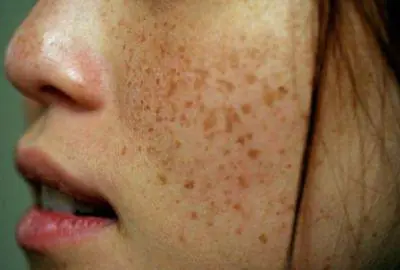
Consultation with specialists
Freckles or moles on the face themselves do not cause discomfort or pain, but it should be remembered that they cannot just appear. You should immediately go to the hospital and undergo a whole body examination after their appearance. In addition, it is recommended to visit doctors such as an endocrinologist, therapist, gynecologist and gastroenterologist. This will help identify the causes of brown spots on the face. Only after diagnosis is appropriate therapy prescribed.
Treatment Methods for Brown Spots on the Face
How to get rid of brown spots on your face? In order for them to completely disappear, it is necessary to carry out appropriate treatment, after which the spots will lighten or disappear.
To get rid of pigmentation on the face, beauty salons offer the following methods:
- Laser resurfacing. Thanks to the laser's effect on pigmentation, these areas of the skin are regenerated, spots disappear, and skin tone increases.
- Mesotherapy. To carry out this procedure, vitamin complexes, medicinal components or fillers are used, which are injected under the skin.
- Chemical peeling of the face. This method can eliminate not only age spots, but also other skin defects. To remove the top layer of skin, superficial or deep peeling is performed using a solution of glycolic and fruit acid. This method is quite painless, but after the procedure the skin must be protected from the sun for a certain time.
- Phototherapy. This procedure is carried out using a laser device that emits a pulse of light, which is aimed at the accumulation of melanin cells in the layers of the skin and destroys them.
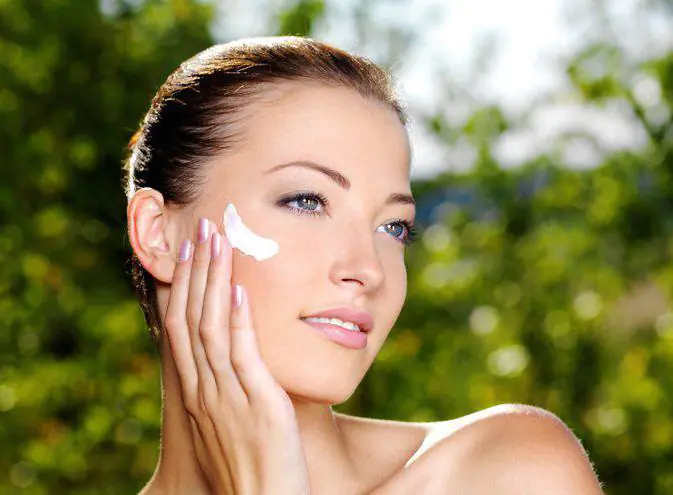
Whitening preparations for removing pigmentation on the face
Whitening cosmetic products are used to remove brown spots on the face. To avoid the appearance of more moles and freckles on your face or their darkening, you must use these whitening products with extreme caution. In addition, some drugs have their own contraindications, so before you start using them, you should consult with your doctor.
The most famous whitening products:
- Cream "Retin-A", stabilizing the level of melanin in the skin.
- Face mask “Belita Vitex” with acids and white clay. It removes age spots while moisturizing the skin.
- Cream "Achromin MAX" has the function of protecting the skin from exposure to sunlight and eliminating brown spots.
- Cream Biocon "Snow White", which is made on the basis of licorice, white lily and lactic acid, helps prevent pigmentation on the face and also has a sunscreen effect.
- VC-IP solution with vitamin C eliminates hyperpigmentation of the skin cell layers.
- Zinc ointment also whitens stains very well. It has no contraindications, so it can be used by pregnant women. The ointment should be applied to age spots 2 times a day until they completely disappear.
Before using any product, be sure to read the ingredients and do a test for a possible allergic reaction.
Integrated approach and UV protection
Any problem must be treated comprehensively, just like pigmentation on the face. The effectiveness of complex cosmetic products in the treatment of brown spots has been clinically proven. The action of such drugs occurs in two directions:
- Providing local therapeutic and cosmetic results.
- Provides protection from the harmful effects of ultraviolet radiation.
These products include the complex drug Neotone, which uses a serum with such modern ingredients as licorice, alpha-arbutin, Lumiskin. It is intended for night skin care. Also highly effective products include Radiance with an increased degree of protection SPF50+, which provides morning care to the skin. This is a very effective product, it performs all stages of facial skin care. In addition, it is a caring and cosmetic product that acts as a safe means of preventing age spots.
Traditional medicine
There are many proven and safe folk methods to get rid of age spots. Masks that are applied to the face for 25-30 minutes and then washed off with water have a very good effect. These masks include the following:
- Egg white is mixed with lemon juice, then a few drops of hydrogen peroxide are added to this mixture.
- Finely grated cucumber is applied to the face for half an hour and then removed with a napkin.
- The egg yolk is mixed with peeled, boiled potatoes in their jackets.
- Half a tablespoon of lemon juice is mixed with 20 grams of fresh yeast.
- Before applying the mask to dry skin, wipe your face with olive or corn oil and steam it over a chamomile bath.
- In addition, washing with birch sap, wiping the face with a decoction of melon pulp, parsley lotion, strawberry water, sauerkraut or grapefruit juice, and elderberry infusion bring good results.
- Hydrogen peroxide can be used as a bleach if the brown stains are very dark in color. To do this, apply a cotton pad soaked in hydrogen peroxide to the desired area of skin. Then apply plastic wrap and hold this compress for about 15 minutes. Then the skin must be thoroughly rinsed with clean water. This compress must be done for 10 days.

Prevention
Cosmetologists recommend adhering to the following recommendations to avoid the occurrence of brown spots on the face:
- The top layer of skin should be exfoliated regularly by a cosmetologist.
- Maintain proper nutrition.
- Protect your facial skin from ultraviolet radiation with cosmetics that contain shea and jojoba butters, retinol and vitamin C.
- Including plenty of fruits and vegetables in your daily menu. During vitamin deficiency in the spring, it is advisable to take nicotinic acid and vitamin C.
- It is undesirable to use phototoxic agents on skin prone to the appearance of age spots.



